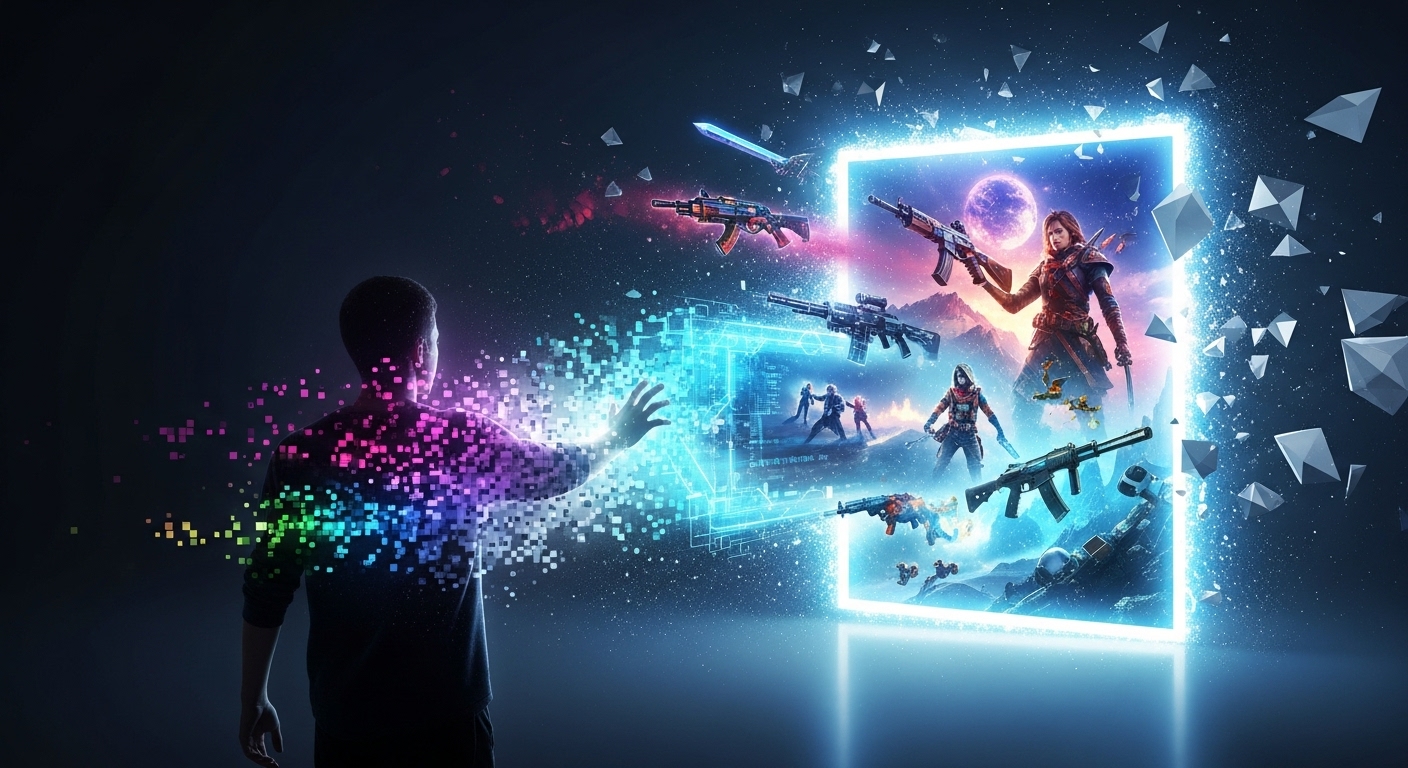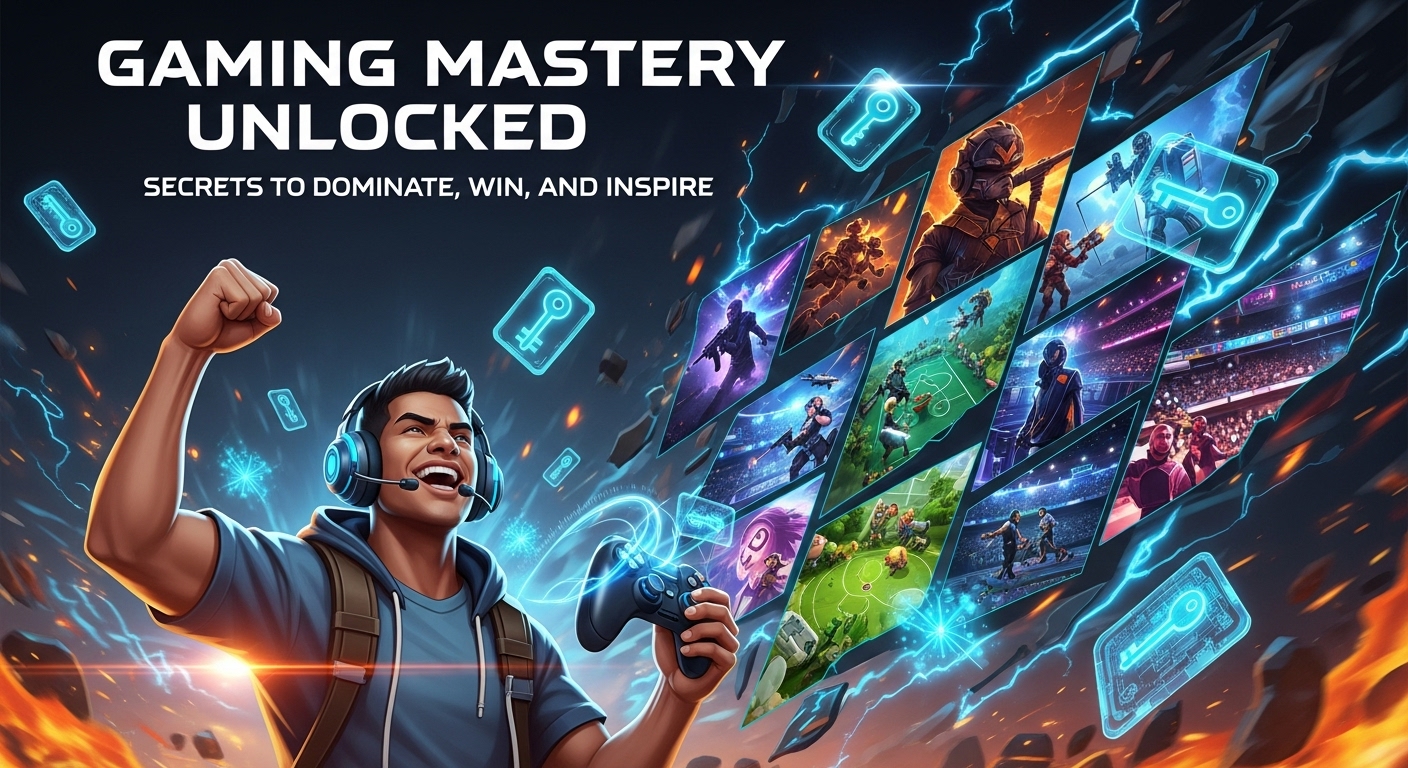Introduction
Gaming has transformed from a simple pastime into one of the most influential and culturally significant industries in the world. What began as pixelated graphics on bulky machines has evolved into hyper-realistic, immersive experiences that blur the lines between virtual and real life. The journey of gaming is not just about technological advancement; it’s also a reflection of human creativity, community, and the desire for escapism. From the arcades of the 1970s to the sprawling virtual worlds of today, gaming has shaped generations, inspired art forms, and revolutionized entertainment.
This blog explores the incredible evolution of gaming — its origins, milestones, cultural impact, and the boundless future that lies ahead.
The Early Days: Birth of Digital Play
The story of gaming begins in the mid-20th century, long before home consoles became a household item. Early computer scientists and engineers experimented with basic interactive programs, not realizing they were planting the seeds of a global phenomenon. The first recognizable video game, often considered to be “Tennis for Two” created in 1958 by physicist William Higinbotham, was displayed on an oscilloscope. It was simple, yet revolutionary.
As technology advanced, arcade machines began to appear. In the early 1970s, titles like Pong and Space Invaders captured the public’s imagination. Players flocked to arcades, lining up to test their reflexes and challenge friends. The arcade era represented more than just fun — it was the birth of gaming culture. People gathered not in isolation but in social spaces, making gaming an early form of interactive community entertainment.
The Rise of Home Consoles
By the late 1970s and early 1980s, gaming was ready to enter homes. Companies like Atari and Nintendo saw the opportunity to create dedicated systems for family entertainment. The Atari 2600 introduced players to a new way of experiencing games — in their living rooms. Titles like Pac-Man, Donkey Kong, and Pitfall! became pop culture icons, and the video game cartridge was a technological breakthrough that allowed players to switch games easily.
However, this golden era was briefly interrupted by the video game crash of 1983. Oversaturation, poor-quality games, and lack of consumer trust led to a market collapse. Many believed the gaming industry was over. Yet, from the ashes of that collapse rose a company that would change the world: Nintendo.
The Nintendo Revolution
In 1985, Nintendo released the Nintendo Entertainment System (NES), a console that redefined the standards for home gaming. The NES was more than hardware — it was a gateway to imagination. Games like Super Mario Bros., The Legend of Zelda, and Metroid introduced players to vivid worlds, memorable characters, and stories that extended beyond mere high scores.
The success of the NES revived the entire gaming industry. It established quality control standards and cemented Nintendo as a creative powerhouse. Soon after, Sega entered the scene with its Genesis console, sparking one of the most iconic rivalries in gaming history. The 1990s became the age of console wars, where every release was not just a product but a statement of innovation.
The 1990s: The Golden Age of Innovation
The 1990s were transformative years for gaming. The jump from 2D to 3D graphics was monumental. With the arrival of the Sony PlayStation and Nintendo 64, players were introduced to immersive worlds like never before. Titles such as Final Fantasy VII, Super Mario 64, and The Legend of Zelda: Ocarina of Time pushed the boundaries of what was possible in storytelling, gameplay mechanics, and visual fidelity.
The rise of personal computers also changed the landscape. PC gaming became synonymous with deep, complex experiences. Games like Doom, StarCraft, and Half-Life introduced new genres and mechanics. First-person shooters, real-time strategy, and role-playing games found their most devoted audiences on the PC platform.
This era also gave birth to multiplayer gaming on a larger scale. Through local area networks (LAN) and the early internet, players could connect and compete from different locations. What started as a novelty would later become one of the defining aspects of modern gaming.
The 2000s: The Age of Connectivity
As the new millennium dawned, gaming began to embrace online connectivity. The PlayStation 2, Xbox, and Nintendo GameCube ushered in the next generation of consoles, offering not just better graphics but online multiplayer experiences. The introduction of Xbox Live in 2002 was a major milestone. Players could compete, chat, and form communities from across the globe.
Simultaneously, PC gaming continued to thrive, with titles like World of Warcraft, Counter-Strike, and The Sims defining an era. Online gaming communities became social ecosystems of their own. Players weren’t just gamers anymore — they were part of global digital cultures.
The 2000s also saw the rise of gaming franchises that continue to dominate today. Series such as Call of Duty, Halo, Grand Theft Auto, and The Elder Scrolls became more than games; they were experiences that defined generations. The narrative depth, cinematic presentation, and emotional storytelling reached new heights.
Mobile Gaming Emerges
While console and PC gaming dominated headlines, another revolution was quietly brewing — the rise of mobile gaming. Early mobile games like Snake on Nokia phones were incredibly simple, but they introduced gaming to millions of people who never owned a console or PC.
When smartphones entered the market, everything changed. The introduction of devices like the iPhone transformed gaming accessibility forever. Suddenly, games could be downloaded instantly and played anywhere. Titles such as Angry Birds, Candy Crush Saga, and Clash of Clans became cultural phenomena, attracting not just traditional gamers but people of all ages and backgrounds.
Mobile gaming redefined the audience. It broke down barriers and showed that gaming wasn’t limited to a specific demographic. This democratization of gaming expanded the industry’s reach beyond anything seen before.
The Rise of Esports and Streaming
The competitive aspect of gaming evolved into a billion-dollar industry in the 2010s. What started as small LAN tournaments became massive esports events watched by millions. Games like League of Legends, Dota 2, and Counter-Strike: Global Offensive turned professional players into global celebrities.
Streaming platforms transformed how games were experienced. Services like Twitch and YouTube Gaming allowed players not just to play but to share their experiences with vast audiences. Viewers could interact, learn, and entertain themselves through live content. Gaming became more than an individual activity — it became a shared spectacle.
This cultural shift also blurred the lines between playing and watching. Many people who didn’t even own consoles became avid fans of gaming content. Esports arenas filled up with cheering crowds, while millions more tuned in online. The gaming industry was no longer just about selling games; it was about building communities and entertainment ecosystems.
The Era of Virtual Reality and Immersion
As technology continued to advance, the pursuit of immersion became the next frontier. Virtual reality (VR) and augmented reality (AR) introduced players to entirely new dimensions of play. Devices like the Oculus Rift, HTC Vive, and PlayStation VR allowed gamers to step inside their favorite worlds.
VR offered a new level of presence — the feeling of being inside the game. Whether exploring alien landscapes, simulating realistic environments, or experiencing stories firsthand, VR created a deeply personal form of gaming.
At the same time, augmented reality brought the game world into reality itself. The global success of Pokémon GO demonstrated the power of AR to engage millions in real-world exploration combined with digital interaction.
The Social Dimension of Modern Gaming
Modern gaming is not just about playing — it’s about connecting. Online games have evolved into social platforms where people meet, talk, and even form lifelong friendships. Games like Fortnite, Minecraft, and Roblox are not just about competition or creativity; they are social spaces where millions interact daily.
Gaming has also become a means of self-expression. Players personalize avatars, design worlds, and even create original content within games. Virtual economies have emerged, where digital items hold real-world value. This blend of creativity, commerce, and community marks a defining feature of 21st-century gaming.
Storytelling in Games: The New Literature
One of the most remarkable evolutions in gaming has been its storytelling capacity. Early games were built around simple objectives, but modern titles rival the depth and complexity of novels or films. Games such as The Last of Us, Red Dead Redemption 2, and God of War demonstrate emotional narratives, moral dilemmas, and cinematic artistry.
Interactive storytelling allows players to shape the outcome of their journeys. Unlike movies, where the audience watches passively, games empower players to influence events and experience consequences. This interactive nature creates a deeper emotional bond between player and story.
Gaming has become a legitimate art form, blending narrative, music, visuals, and interactivity into one holistic medium. Scholars, critics, and educators have begun to recognize its cultural and artistic significance.
The Cultural Impact of Gaming
Today, gaming influences nearly every aspect of culture. Its aesthetics inspire movies, music, fashion, and even sports. Characters like Mario, Sonic, and Lara Croft are as recognizable as any film star. Esports events rival traditional sports in viewership, and game soundtracks are performed by orchestras around the world.
Beyond entertainment, gaming has shaped technology, education, and even psychology. Gamification — the use of game design elements in non-game contexts — has revolutionized learning, marketing, and workplace motivation. Games have also proven effective in therapy, rehabilitation, and training simulations, demonstrating their value beyond recreation.
Gaming has become a universal language, transcending geography, gender, and age. It connects people across borders and fosters shared experiences in virtual spaces.
The Business of Gaming
The gaming industry today surpasses the combined revenues of film and music. Major companies invest billions in development, marketing, and distribution. Franchises like Call of Duty, FIFA, and Grand Theft Auto generate enormous profits annually. Yet, indie developers have also found their place, creating innovative and artistic experiences without massive budgets.
Digital distribution platforms have made it easier for small teams to reach global audiences. The rise of subscription services and cloud gaming has changed how games are accessed, emphasizing convenience and accessibility. Instead of buying physical discs, players now stream or download games instantly.
The economic ecosystem of gaming includes merchandise, events, esports, and even cinematic adaptations. It’s not merely an industry — it’s a cultural powerhouse.
Cloud Gaming and the Future of Access
The next big shift in gaming revolves around cloud technology. Cloud gaming allows players to stream games directly from servers without needing powerful hardware. This innovation could make high-quality gaming accessible to anyone with an internet connection.
The potential of cloud gaming lies in its inclusivity. No longer will gamers be limited by device specifications. Whether on a phone, tablet, or smart TV, players can experience console-level graphics and performance. It represents a new step toward global accessibility and environmental sustainability by reducing hardware waste.
The Future: Artificial Intelligence and the Metaverse
Looking ahead, gaming stands at the forefront of emerging technologies like artificial intelligence and the metaverse. AI-driven design enables more dynamic and adaptive gameplay, where worlds react intelligently to player behavior. Non-player characters now exhibit realistic emotions and learning capabilities, creating deeper immersion.
The concept of the metaverse — a persistent, shared digital universe — takes gaming beyond entertainment. It envisions a future where social interaction, business, education, and creativity merge into unified virtual environments. Games are the foundation of this vision, serving as the blueprint for interconnected digital life.
The Power of Community and Creativity
Perhaps the most beautiful aspect of gaming’s evolution is the community that surrounds it. Players today are creators, storytellers, and innovators. Modding communities build new worlds within existing games, fan artists celebrate their favorite characters, and independent developers push creative boundaries.
Gaming fosters collaboration across borders and generations. Parents play with children, friends connect across continents, and strangers become teammates or lifelong friends. It embodies the human need for play, connection, and imagination.
Conclusion
From its humble beginnings in laboratories to the immersive virtual worlds of today, gaming has undergone a remarkable transformation. It has evolved from simple pixels into complex universes that engage millions in shared experiences of creativity, competition, and storytelling.
Gaming is no longer confined to a screen; it’s a global culture, an art form, and a technological frontier. As we move into an era of virtual reality, artificial intelligence, and the metaverse, one thing remains constant — the joy of play. It’s this joy that continues to unite players across time, technology, and space.
The journey of gaming is far from over. Each generation redefines what it means to play, create, and connect. And in this endless cycle of innovation and imagination, gaming will always remain a reflection of who we are and what we aspire to be — explorers of infinite worlds, bound only by the limits of our dreams.



